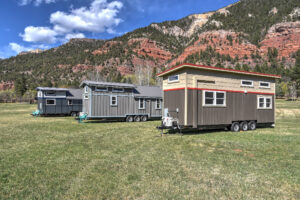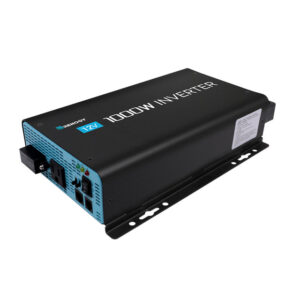
Key Takeaways:
-
Discover the best solar panel roof mounts for maximizing efficiency in tiny homes.
-
Understand the key factors to consider when selecting the right solar panel mounts.
-
Learn the differences between fixed and tracking mounts to make an informed decision.
-
Get insights on the top brands for solar panel roof mounts based on expert reviews.
-
Follow a comprehensive guide for a seamless solar panel installation process.
Shine Brighter: Top Picks for Solar Roof Mounts in Tiny Homes
Embracing the tiny home movement means making the most of every square inch, and when it comes to energy, solar power is the king of efficiency. The right solar panel roof mounts can make a world of difference in your tiny home’s energy system. They not only provide the foundation for your solar panels but also impact the overall performance and durability of your solar investment. Let’s explore the top picks that are not just robust and reliable, but also ideal for the unique challenges of tiny home living.
Criteria for Selecting Solar Panel Mounts
Before diving into the options, it’s crucial to understand the criteria for selecting solar panel mounts. Here are the factors you should consider:
-
Compatibility: Ensure the mounts fit your specific type of solar panels and roof material.
-
Durability: Look for weather-resistant materials that can withstand harsh conditions.
-
Installation: Consider the ease of installation and whether it can be a DIY project.
-
Space Efficiency: In a tiny home, space is at a premium, so choose mounts that optimize available space.
-
Cost: Balance your budget with the quality and longevity of the mounting system.
These criteria will guide you to a mounting system that not only fits your home but also your lifestyle and budget.

Fixed Mounts vs. Tracking Mounts: Which to Choose?
When it comes to solar mounts, you have two primary options: fixed mounts, which stay in one position, and tracking mounts, which follow the sun’s movement. Fixed mounts are more common in tiny homes due to their simplicity and lower cost. However, tracking mounts can increase energy production by keeping your panels aligned with the sun throughout the day. The choice depends on your energy needs, budget, and the space available on your tiny home’s roof.
Top Reviewed Solar Panel Roof Mount Brands
Finding a reliable brand is as important as the mount itself. After thorough research and expert reviews, here are the top brands that stand out:
-
IronRidge: Known for their strong, versatile, and easy-to-install systems.
-
Unirac: Offers a broad range of high-quality, durable mounting options.
-
Quick Mount PV: Specializes in mounts that provide excellent waterproofing and security.
These brands have been lauded for their commitment to quality and innovation, making them excellent choices for your tiny home solar setup.
Seamless Solar Install: Step-by-Step Guidance
Installing solar panels in a tiny home doesn’t have to be daunting. With the right guidance, you can ensure a smooth installation process. In the following sections, we’ll walk you through the necessary steps, from choosing your materials to the final electrical hookup. Let’s get your tiny home powered by the sun!

Materials and Tools Checklist
Before you start your solar panel installation, it’s essential to gather all the necessary materials and tools. Here’s what you’ll need:
-
Solar panels and mounting brackets
-
Drill with appropriate bits for your roof material
-
Wrench set and screwdrivers
-
Stud finder (for locating rafters)
-
Sealant compatible with your roofing material
-
Wire cutters and strippers
-
Personal protective equipment (gloves, safety glasses)
-
Ladder and safety harness
Having everything on hand before beginning will streamline the installation process and help avoid unnecessary delays.
Understanding Roof Layouts for Optimal Placement
Your tiny home’s roof layout plays a pivotal role in the placement of solar panels. You’ll want to ensure maximum sun exposure while considering the roof’s load-bearing capacity. Here’s how to understand your roof layout:
“Evaluate the direction your roof faces, the angle of inclination, and any potential shading from trees or structures. The ideal scenario is a south-facing roof with a tilt angle equal to your latitude.”
It’s also smart to leave some space around the panels for maintenance and to avoid potential fire hazards.
Detailed Installation Procedure
Installing solar panels involves several steps, each crucial for a successful setup:
-
Locate the rafters using your stud finder and mark them clearly.
-
Align the mounting brackets with the rafters and drill pilot holes.
-
Secure the brackets using bolts, ensuring they’re watertight with sealant.
-
Attach the solar panels to the brackets, making sure they’re firmly in place.
-
Connect the solar panels to each other in your desired configuration.
Take your time during each step to ensure everything is correctly aligned and securely attached.
Electrical Hookup: Safety and Efficiency
The electrical hookup is a critical phase where safety is paramount. Here’s what you need to do:
-
Turn off the main power supply to avoid any electrical hazards.
-
Connect the solar panel cables to the inverter, ensuring proper polarity.
-
Ground the system by connecting it to a grounding rod.
-
Finally, connect the inverter to your home’s electrical panel.
Consider hiring a professional electrician for this step if you’re not confident in your electrical skills.
Permitting Process: Navigating the Legalities
Before you begin the installation, you’ll need to navigate the permitting process. This typically involves:
-
Submitting your solar panel system design to the local building department for approval.
-
Acquiring the necessary building and electrical permits.
-
Understanding and adhering to local codes and regulations.
-
Scheduling inspections to ensure your installation meets all requirements.
Staying informed and compliant with local laws will ensure your solar project is legal and up to code.
Tiny Home, Big Impact: Optimizing Space for Solar
When you’re working with a tiny home, every inch counts. That’s why optimizing your limited roof space for solar panel installation is not just a smart move—it’s essential. The goal is to harness as much solar energy as possible without compromising the design and functionality of your home.

Maximizing Roof Real Estate for Solar Panels
To get the most out of your solar panels, you need to think strategically about placement. Here’s how to maximize your roof real estate:
-
Measure your roof area and plan a layout that allows for the maximum number of panels.
-
Consider using higher efficiency panels that generate more power per square foot.
-
Arrange panels to avoid shading from chimneys, vents, or other structures.
-
Use tilt mounts to angle panels towards the sun, increasing their effectiveness.
-
Leave space for future expansion if you anticipate increased energy needs.
By maximizing your roof’s potential, you can ensure that your tiny home’s solar system will be as productive as possible.
Incorporating Solar into Tiny Home Design
Incorporating solar panels into your tiny home’s design is not just about functionality; it’s about creating a harmonious blend of form and function. Consider these tips:
-
Integrate solar panels into the design from the start, rather than adding them as an afterthought.
-
Choose panels and mounting hardware that complement the aesthetic of your home.
-
Work with a designer or architect who has experience with solar integrations.
-
Consider creative solutions like solar shingles or flexible panels for curved surfaces.
-
Think about the orientation of your home and how it can be positioned to take full advantage of the sun’s path.
With careful planning, your solar setup can be a seamless and attractive part of your tiny home’s design.
Post-Installation: Keeping Your Solar Setup Efficient
After you’ve installed your solar panels, the work isn’t over. Maintaining efficiency is key to getting the most out of your investment. Here’s how to keep your solar setup running smoothly.

Maintaining your solar panels doesn’t have to be a chore. Follow these routine maintenance tips to ensure they’re always performing at their best:
-
Regularly clean the panels to remove dust, dirt, and debris that can block sunlight.
-
Inspect the panels and mounting system for signs of wear or damage, especially after extreme weather.
-
Trim any overhanging branches that may cause shading or drop debris on the panels.
-
Monitor your system’s performance to catch any issues early on.
-
Have a professional inspect and service your system periodically, especially the inverter and electrical components.
By keeping up with routine maintenance, you can ensure your tiny home’s solar panels will continue to provide clean energy for years to come.

Monitoring Systems: Keeping Track of Your Solar Output
Staying informed about your solar panel performance is crucial. Monitoring systems let you track your energy production and consumption in real-time. This means you can make adjustments to your usage and ensure your system is functioning optimally. Look for monitoring solutions that offer:
-
User-friendly interfaces accessible via smartphone or computer.
-
Real-time data on energy production and usage.
-
Alerts for abnormal performance or system malfunctions.
-
Historical data analysis to help you understand your energy patterns.
With the right monitoring system, you’ll have the power to maximize your solar investment and keep your tiny home running efficiently.
Common Issues and Troubleshooting
Even the best solar setups can encounter issues. Here are some common problems and how to troubleshoot them:
-
Decreased energy production: Check for and clean any obstructions like leaves or snow.
-
System not turning on: Verify that all connections are secure and switches are in the “on” position.
-
Inverter errors: Refer to the inverter’s manual for specific error codes and solutions.
-
Battery issues in off-grid systems: Ensure batteries are properly charged and maintained.
If you can’t resolve an issue, don’t hesitate to contact a professional. Regular maintenance can help prevent many of these problems before they start.
Key Takeaways
Here’s a recap of the essential points covered:
-
Choosing the right solar panel mounts is critical for tiny home efficiency and space optimization.
-
Fixed mounts are generally more suitable for tiny homes, but tracking mounts can increase energy production.
-
IronRidge, Unirac, and Quick Mount PV are top brands for durable and reliable solar mounting solutions.
-
Following a step-by-step installation guide ensures a safe and efficient setup.
-
Regular maintenance and monitoring are key to sustaining peak solar panel performance.
Crafting Your Tiny Home Solar Strategy
Creating an effective solar strategy for your tiny home involves careful planning and consideration. Start by assessing your energy needs and roof capacity. Choose high-quality mounts and panels that suit your specific situation. Don’t forget to factor in monitoring and maintenance as part of your overall plan. With a well-thought-out strategy, your tiny home will not only be energy-efficient but also environmentally friendly and cost-effective in the long run.
FAQ: Illuminating Your Solar Queries
-
How do I calculate the number of solar panels I need for my tiny home? – Consider your daily energy usage and available roof space to determine the number and size of panels required.
-
Can I expand my solar panel system later? – Yes, most systems are scalable, but plan your initial setup with future expansion in mind.
-
What’s the lifespan of a solar panel system? – Solar panels typically last 25-30 years, but the inverter may need to be replaced sooner.
-
Do solar panels work on cloudy days? – Yes, they do, but their efficiency is reduced compared to sunny days.
-
How do I maintain my solar panel system? – Regular cleaning and inspections are key, along with professional check-ups every few years.
Having a solar-powered tiny home is a smart, sustainable choice. With the right knowledge and tools, you can enjoy the benefits of solar energy and contribute to a greener planet.
What Are the Long-Term Benefits of Solar Panels for Tiny Homes?
The long-term benefits of solar panels for tiny homes are substantial. Solar panels drastically reduce your electricity bills, and in some cases, you might produce enough energy to sell back to the grid. They also increase your energy independence, crucial for off-grid living. Environmentally, solar panels reduce your carbon footprint, contributing to a cleaner, more sustainable planet. Lastly, solar panels have a long lifespan, often 25-30 years, making them a wise investment for the future.
Are There Any Special Considerations for Mobile Tiny Homes?
For mobile tiny homes, there are additional considerations. The solar panel system must be robust enough to withstand movement and vibration. Flexible solar panels or semi-flexible panels might be a good choice as they can conform to the contours of the home and are less likely to be damaged during transit. Additionally, the mounting system should be designed for easy setup and breakdown, allowing for quick deployment when you settle in a new location.
How Does Weather Affect Solar Panel Efficiency?
Weather plays a significant role in the efficiency of solar panels. Sunny days will naturally produce more energy, but solar panels can still generate electricity on cloudy days, albeit at a lower rate. Snow, dust, and debris can obstruct the panels and should be cleared to maintain efficiency. Extreme temperatures can also affect performance—heat can reduce output, and cold can increase it, though the impact is generally minimal with modern panels designed to operate across a range of conditions.
In conclusion, integrating solar panels into your tiny home is a smart and sustainable choice that can yield numerous long-term benefits. From reducing your ecological footprint to achieving energy independence, the advantages are clear. Whether you’re stationary or on the move, there’s a solar solution that fits your lifestyle. Remember, while the initial setup requires careful planning and consideration, the payoff is a self-sufficient home that harnesses the power of the sun. Embrace the tiny home solar revolution and let your little abode shine brighter than ever before!



